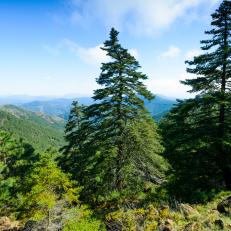A Glacier Experience
Glaciers are the icy heart of the ecosystems they are a part of. Conservationist and Nature Photographer Ian Shive shares incredible glacial photography from all angles.

One of the great dangers of photographing in ice caves is falling chunks of ice, which can be extremely large and heavy and fall without notice. Anytime spent in an ice cave, I was always cautious and quick, but the rewards are worth it with images like this looking out toward the glacial field.
For some reason this photo is one of my favorites of a glacier. Located deep in the wilderness area, hundreds of miles from the nearest road, this is such a primordial scene of ice and freshly released rock below it. To think that these rocks and dirt have been trapped here below the glacier for thousands and thousands of years — and now I'm here to photograph it all — strikes the imagination with wonder and awe.
Skilak Glacier in Kenai National Wildlife Refuge, Alaska, is a massive glacier which reaches down from the Harding Icefield, where it is connected to the 39 other nearby glaciers. This has long been a favorite image of mine because of the emergence of a mountain peak which was most likely completely covered by snow and ice until relatively recently.
Glaciers, and the water they release, are blue because of the density of the ice. It is so dense that it absorbs every other color in the spectrum except blue! Their crystalline structures, which scatter the blue light furthest, form over the many thousands of years that the ice crystals have been compacted down.
This is a close-up, detailed image of air trapped in the ice of a glacier. I wonder to myself, how long has the air been trapped in there? What was the atmosphere of Earth like in that moment? I held the ice up to the sky so that I could capture the individual pockets of air that are trapped inside. Air bubbles may be pressurized from the many years trapped in the glacier, so they could potentially explode without warning.
It's hard to appreciate the size of a glacier, even when you get close to it in a helicopter. Each of the giant blocks of ice on the right are massive and the one on the right of the frame a size similar to a six story building. Even the smallest boulders of ice are the size of a car. I love areas like this along the glacier's edge because they are so dramatic looking and constantly changing.
The Harding Icefield is essentially a massive block of ice in the middle of the Kenai Peninsula, which has fingers of ice reaching away from it. Those "fingers" are actually glaciers, all of which connect at the top of this icefield. While flying up and over the glaciers in Kenai National Wildlife Refuge, the helicopter paused at the summit of the Harding Icefield, giving us a view down to the other side of the peninsula, seen here in this photo. I later learned that this view was not the wildlife refuge, but Kenai-Fjords National Park, meaning that both park and refuge are connected together by ice.
Skilak Lake, shown here at the base of Skilak Glacier, is a relatively new lake formed mostly in the last forty years or so. Located inside Kenai National Wildlife Refuge, Alaska, it is 528 feet deep, 15 miles long, and four mile wide.
As we made our approach to the Tustumena Glacier in Kenai National Wildlife Refuge, Alaska, there was a heavy rain battering down on the helicopter. It was hard to get a clear shot. High winds meant that we had more wobble than usual, but for a split second, I was able to open the window and snag this one epic shot of the glacier with a rainbow over it. This glacier is one of 40 glaciers that reach out like fingers from the massive Harding Icefield in the distance. These glaciers give life to the entire Kenai Peninsula, forming lakes, creeks, and rivers used by fish, bears, and people.













![108312270 Salzburg's famous old town and iconic Hohensalzburg fortress decorated for the Christmas holidays.
Please see my related collections...
[url=search/lightbox/7431206][img]http://i161.photobucket.com/albums/t218/dave9296/Lightbox_Vetta.jpg[/img][/url]
[url=search/lightbox/3521671][img]http://i161.photobucket.com/albums/t218/dave9296/Lightbox_Salzburg-V2.jpg[/img][/url]
[url=/search/lightbox/4780530][img]http://i161.photobucket.com/albums/t218/dave9296/Lightbox_santa_V2.jpg[/img][/url]
[url=search/lightbox/3521651][img]http://i161.photobucket.com/albums/t218/dave9296/Lightbox_alp_winter-V2.jpg[/img][/url]](http://discovery.sndimg.com/content/dam/images/discovery/fullset/2020/12/22/GettyImages-108312270.jpg.rend.hgtvcom.231.231.suffix/1608653200154.jpeg)










